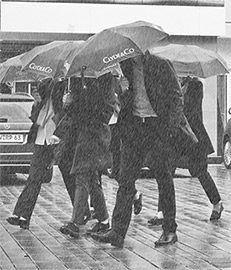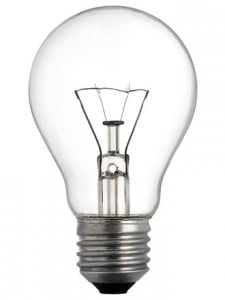6 November 2015
744 view(s)
Do SAD Lights Really Work?
They do at StressNoMore!
If you find yourself feeling low every year when autumn and winter come, you may have heard about something called ‘light therapy’. This can treat conditions like ‘winter blues’ and is done using special SAD lighting that replicates the effect that the sun has on your body.What is Light Therapy Used For?
 The main use for bright light therapy is to treat Seasonal Affective Disorder. This is a condition in which people feel depressed during the winter months, with symptoms such as mood swings, loss of interest in everyday activities, irritability, stress, lack of energy and low libido. It is believed that this is caused by lack of exposure to sunlight, a particular problem in the Northern hemisphere where we have very short days and spend a lot of time indoors in winter due to the cold. This lack of light has several effects on your brain:
The main use for bright light therapy is to treat Seasonal Affective Disorder. This is a condition in which people feel depressed during the winter months, with symptoms such as mood swings, loss of interest in everyday activities, irritability, stress, lack of energy and low libido. It is believed that this is caused by lack of exposure to sunlight, a particular problem in the Northern hemisphere where we have very short days and spend a lot of time indoors in winter due to the cold. This lack of light has several effects on your brain:
- Melatonin, a brain hormone that makes you feel sleepy, is increased. This will make you tired all the time, so that it’s really difficult to get on and enjoy your everyday life.
- Serotonin, a hormone that affects mood, appetite and sleep, is decreased. This leads to unhappiness, loss/increase of appetite and insomnia. Not a great combination!
- Your circadian rhythm (internal clock) uses the sun to determine when you should be awake. If your brain’s not getting enough light, it can get thrown off and cause your sleeping patterns to go wrong – for example you could have trouble falling asleep at night but then feel like you need to nap in the middle of the day.
- Jet lag: if you’re travelling a long distance, a therapy light can be used as a preventative measure or as treatment for jet lag. If you’re traveling east, use it in the morning, or use it in the evening when travelling west. This will help to reset your internal clock to your new destination without as many unpleasant side effects.
- Shift work: working shifts can play absolute havoc with your sleep patterns, as the amount of daylight you see varies constantly. If you’re working night shifts, try using SAD light therapy in the evening to make you feel more awake, then avoid light when you come home to sleep.
- Sleep phase disorder: if you have an unusual sleeping pattern, don’t worry - you can use light therapy for insomnia. For example if you are only able to fall asleep really late at night you can use the lamp in the early morning to wake you up properly so that you will feel awake during the day and get tired earlier.
Which bright light is right for me?
 We’ve expanded our range of therapy lights this Autumn/Winter to offer you the best choice possible and make it easy to find the right light for your needs. The Lumie range includes both powerful SAD lamps and wakeup lamps that will improve our energy levels and mood in a morning.
We’ve expanded our range of therapy lights this Autumn/Winter to offer you the best choice possible and make it easy to find the right light for your needs. The Lumie range includes both powerful SAD lamps and wakeup lamps that will improve our energy levels and mood in a morning.
What is lux?
 You are probably used to light from bulbs being measured in watts. This is a misconception – watts actually measure the amount of energy used by the bulb, with the amount of light measured in ‘lumens’. For example, a 40 watt classic light bulb puts out the same amount of brightness in lumens as a 7.5 watt energy saving light bulb, but they are using much different amounts of power (watts). Another way of measuring light, that’s used to classify SAD lights, is ‘lux’. One lux is equal to one lumen per square metre – this sounds a bit confusing, but I have a simple explanation! If your bedroom is 10 square metres, a bulb that gives off 100 lumens would lead to a light level of 10 lux, because the light is spread out and so the room is dimmer than if the same light was in your wardrobe (in a 2sq/m wardrobe it would be 50 lux).
For a SAD light to work properly as a medical device, it needs to have lux levels of at least 10,000 lux when you’re a comfortable distance away from it. This is equivalent to the amount of light the sun gives off on a clear day (standard office lighting is 320-500 lux). There are lights on the market which are advertised as being suitable for light therapy for SAD, but that don’t actually give off anywhere near enough lux to be effective. Here at StressNoMore we are proud to offer genuine light therapy products, such as the ones in the Innolux, Beurer and Lumie ranges. The more lux a lamp gives off, the further away you can sit from it and still feel its benefits (because the light will be stronger over more square metres). We’ve stated the lux light intensity of all our therapy lights so that you can rest assured that you’ll experience the full benefits of light therapy.
You are probably used to light from bulbs being measured in watts. This is a misconception – watts actually measure the amount of energy used by the bulb, with the amount of light measured in ‘lumens’. For example, a 40 watt classic light bulb puts out the same amount of brightness in lumens as a 7.5 watt energy saving light bulb, but they are using much different amounts of power (watts). Another way of measuring light, that’s used to classify SAD lights, is ‘lux’. One lux is equal to one lumen per square metre – this sounds a bit confusing, but I have a simple explanation! If your bedroom is 10 square metres, a bulb that gives off 100 lumens would lead to a light level of 10 lux, because the light is spread out and so the room is dimmer than if the same light was in your wardrobe (in a 2sq/m wardrobe it would be 50 lux).
For a SAD light to work properly as a medical device, it needs to have lux levels of at least 10,000 lux when you’re a comfortable distance away from it. This is equivalent to the amount of light the sun gives off on a clear day (standard office lighting is 320-500 lux). There are lights on the market which are advertised as being suitable for light therapy for SAD, but that don’t actually give off anywhere near enough lux to be effective. Here at StressNoMore we are proud to offer genuine light therapy products, such as the ones in the Innolux, Beurer and Lumie ranges. The more lux a lamp gives off, the further away you can sit from it and still feel its benefits (because the light will be stronger over more square metres). We’ve stated the lux light intensity of all our therapy lights so that you can rest assured that you’ll experience the full benefits of light therapy.

